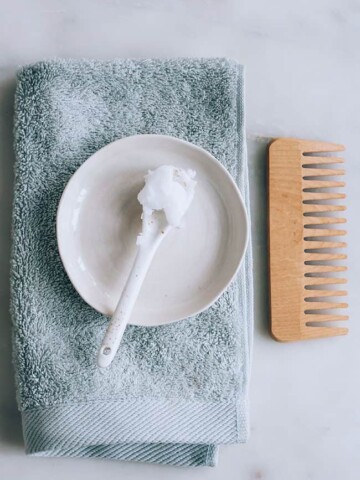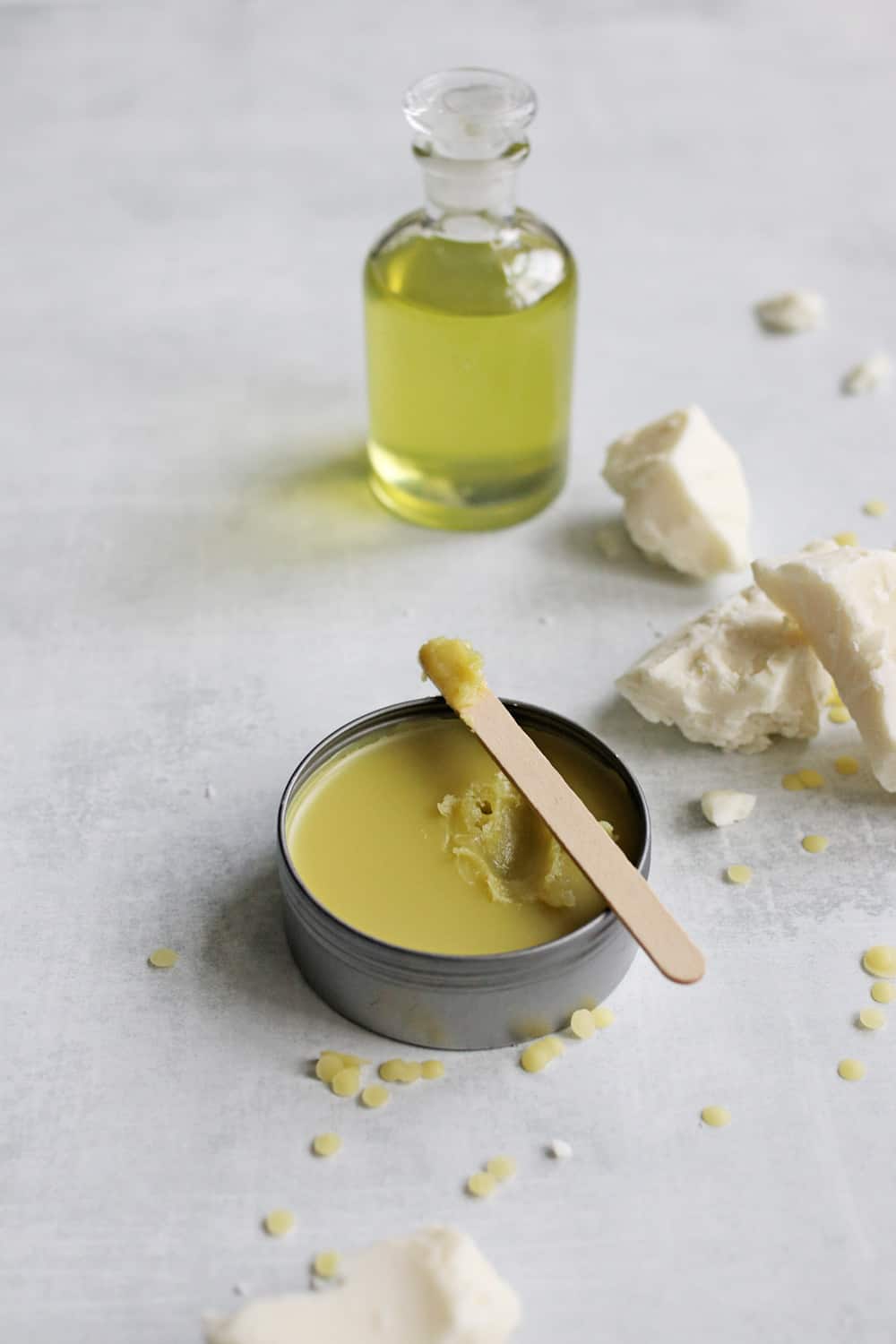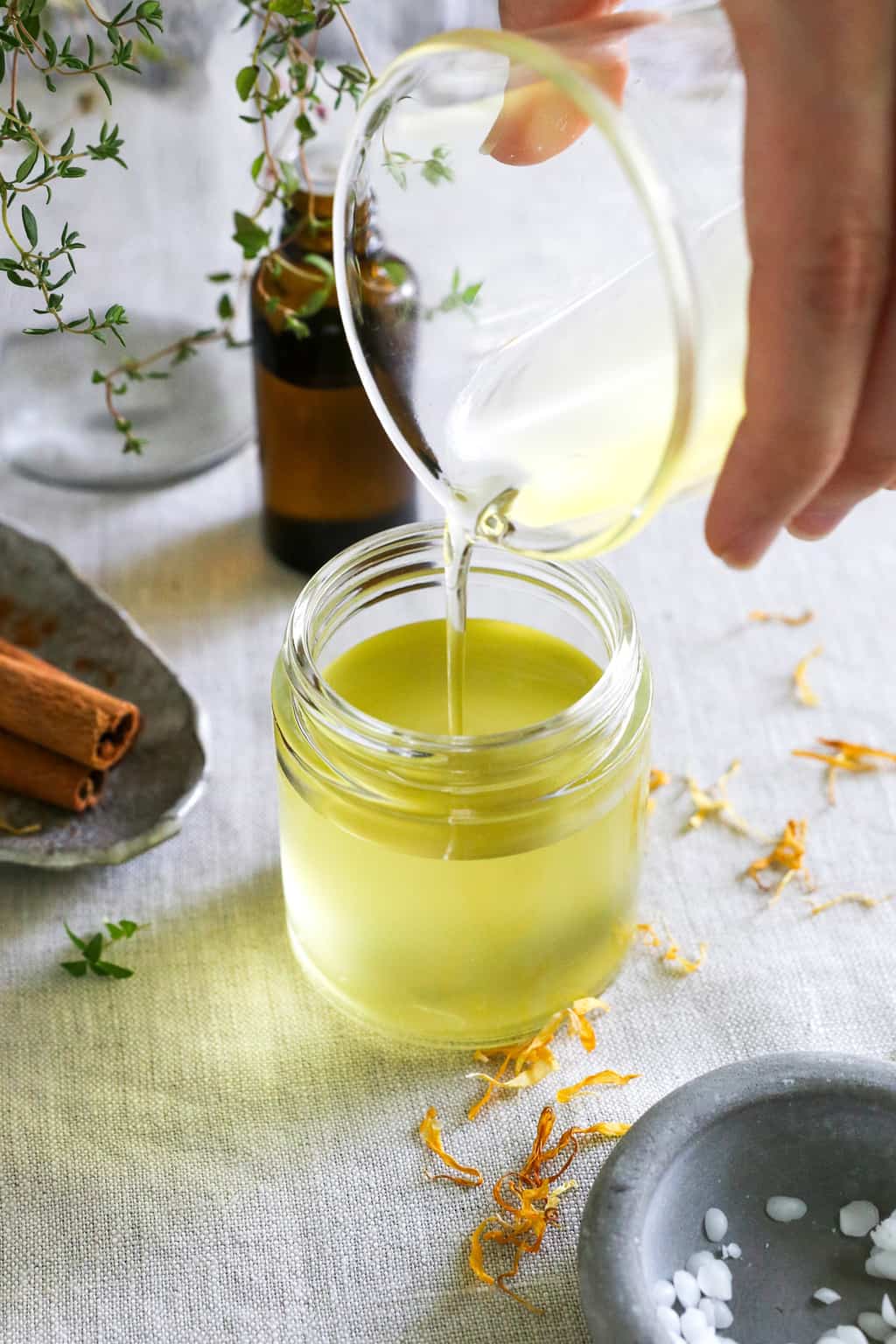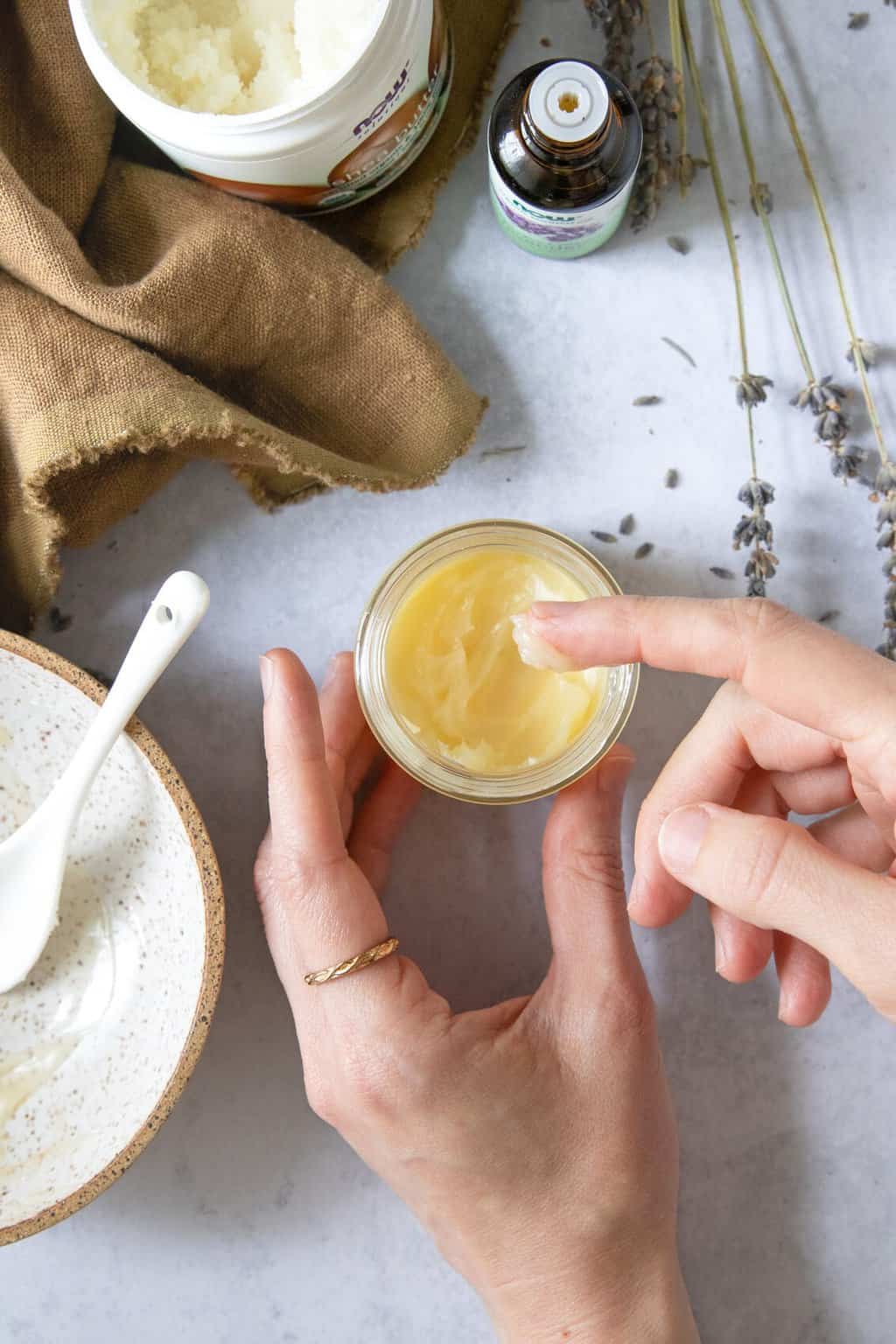This homemade honey hand balm is the perfect antidote for all your dry skin woes. Just slather on a little bit in the morning and wave goodbye to dry, cracked, irritated hands. For an added boost, apply before bed, cover with cotton gloves, and let this recipe work magic on your hands overnight.
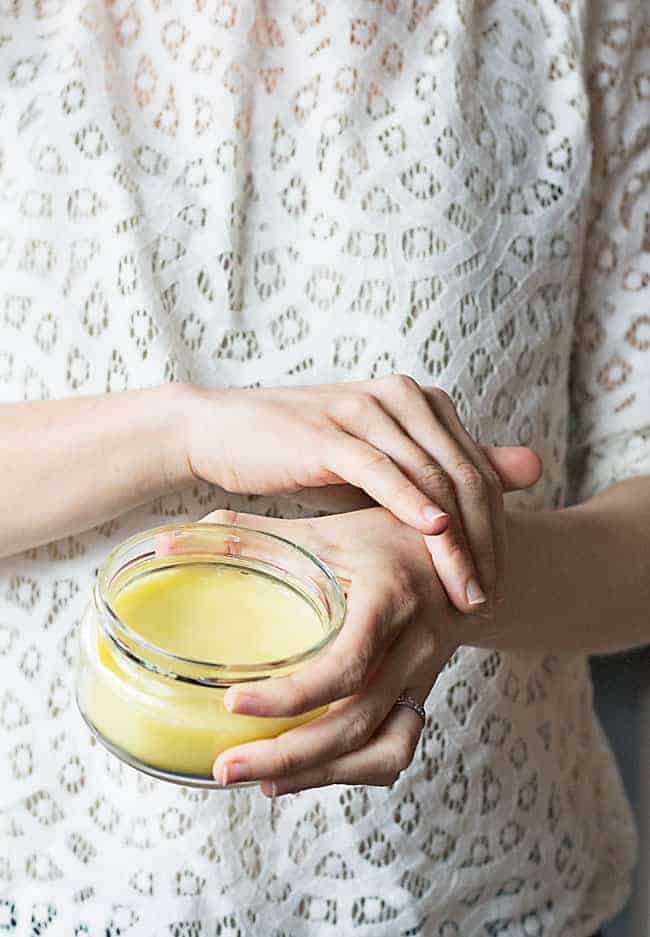
Dry hands are a common problem for many people, especially those living in cold weather conditions. Your hands are most likely chapped from frequent washings and the elements and are badly in need of a little extra TLC.
Trust me when I say that this stuff works miracles. While it makes an amazing hand balm, you can also use it as an after-shower lotion, cuticle cream, hair conditioner, or anything else that might need a little extra moisture this winter. My husband even has a jar of his own that he uses as a beard balm and sparingly as a hair gel.
Jump to:
Benefits of Honey Balm
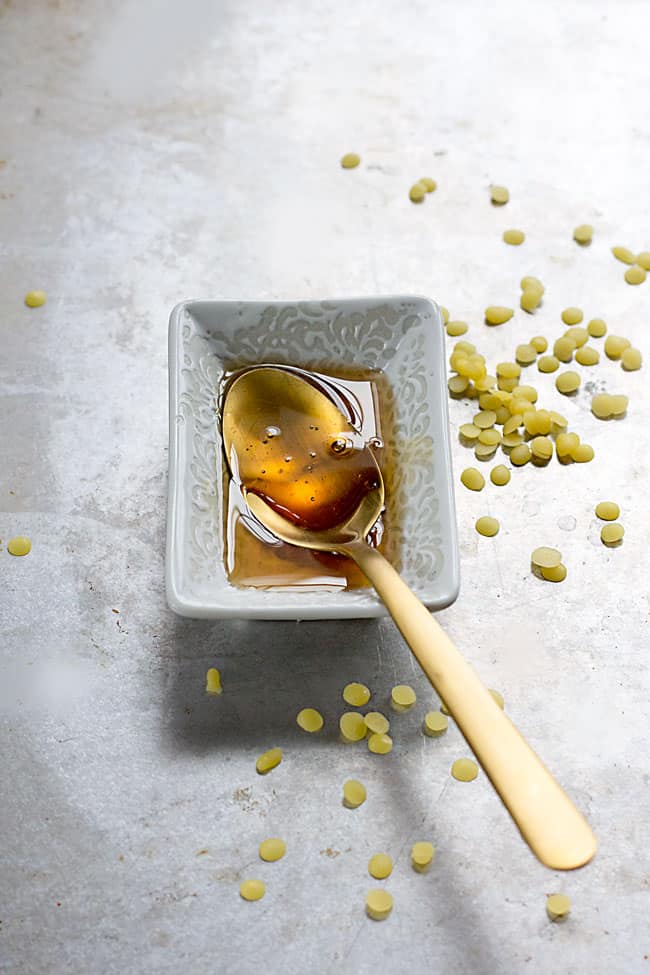
The real beauty of this balm is that it’s made with beeswax and raw honey, so it’s thick (and I do mean thick!) enough to lock in moisture while the honey helps heal wounds and calm irritation [source].
In addition to its calming and healing properties, here are several other ways honey helps combat dry winter skin:
Antimicrobial
Honey is naturally antibacterial and antimicrobial [source], so it can keep skin bacteria in check and help prevent future infections.
Anti-inflammatory
Honey has been directly observed to reduce skin inflammation after being applied to wounds [source]—what better way to soothe chapped, red hands!
Balances skin pH
Because it’s slightly acidic, honey helps regulate skin pH [source], thus promoting skin healing and regeneration.
Natural moisturizer
The sugars in honey act as natural humectants [source], meaning they help increase moisture in the skin and reduce dryness, even after being washed off.
High in nutrients and antioxidants
Honey delivers key amino acids, vitamins, enzymes, and antioxidants to skin cells [source], helping to nourish the skin and prevent free-radical damage.
Ingredients
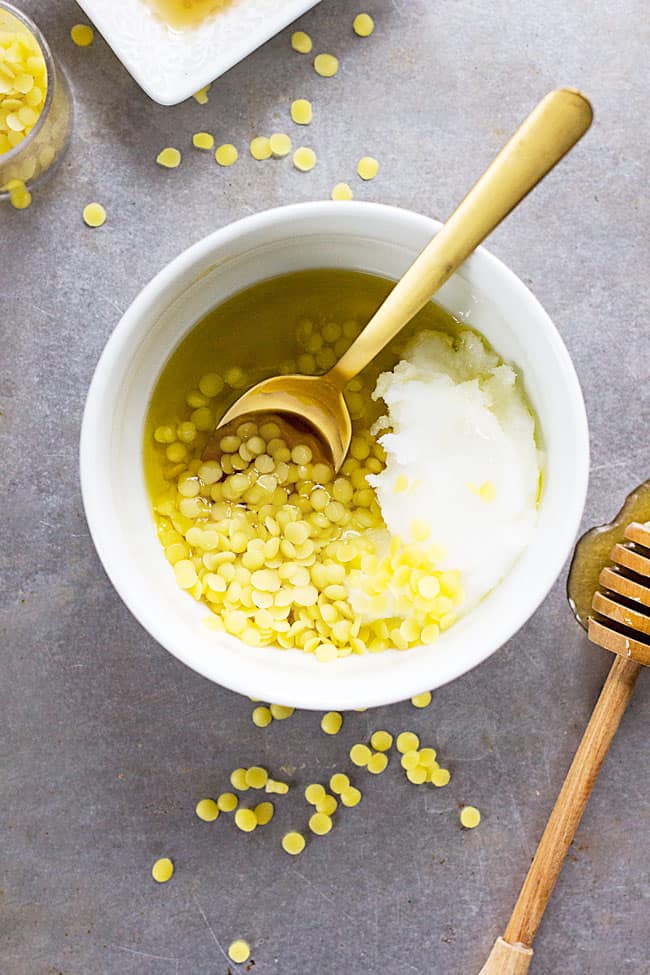
- ¼ cup coconut oil
- ¼ cup almond oil
- ¼ cup olive oil
- 5 tablespoon beeswax pastilles
- 1 tablespoon shea butter
- 1-½ tablespoon raw honey
- Essential oils of your choice
Note: We recently updated this recipe to include an emulsifier and preservative to keep the honey from separating and your balm from going bad prematurely. If you prefer a more natural product (and can overlook some separation), stick with the first recipe. Otherwise, we recommend following the emulsifier recipe.
Instructions
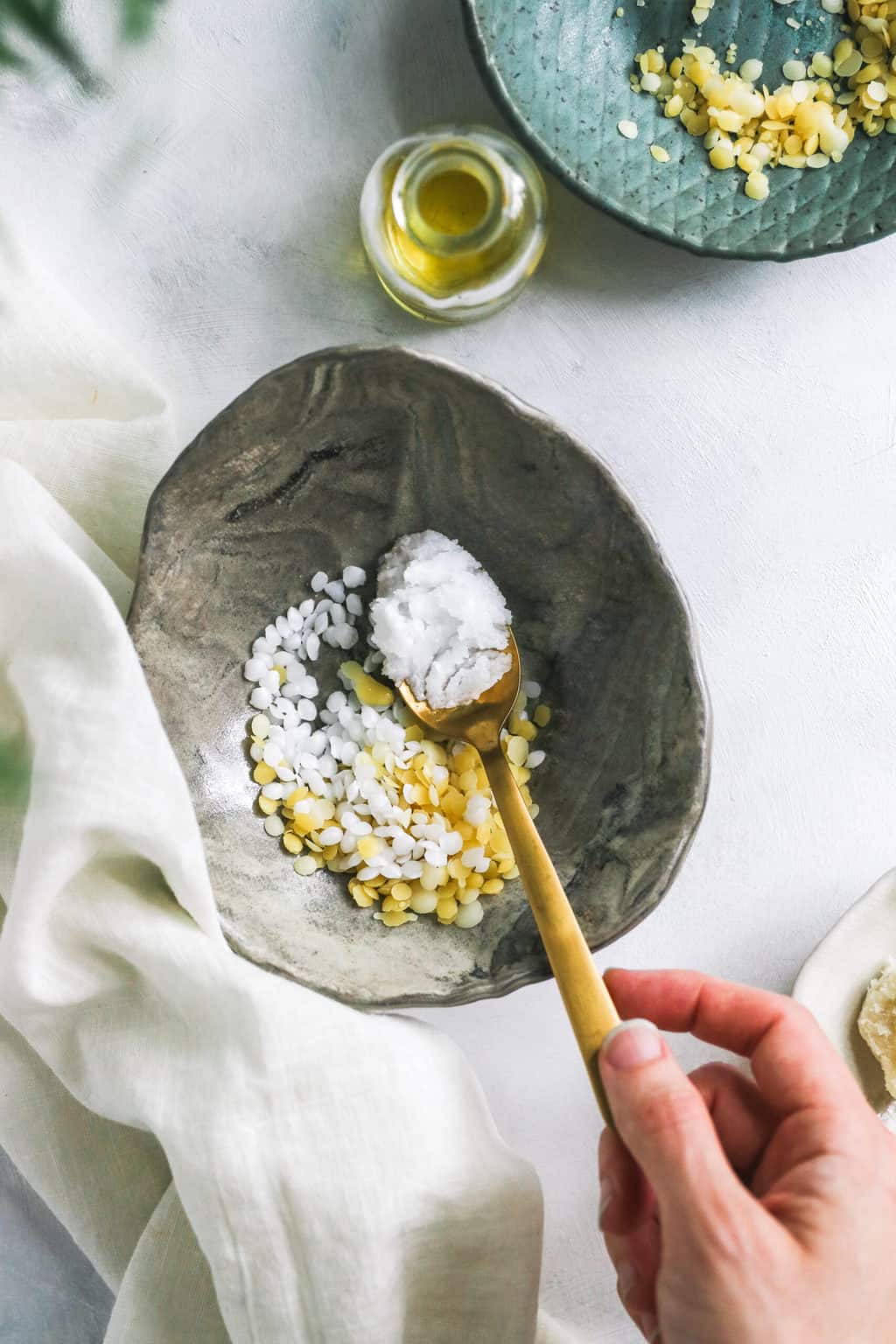
Step 1 | Combine Beeswax + Oils
Combine everything except for the raw honey, Leucidal Liquid SF (if using), and essential oils in a microwave-safe bowl.
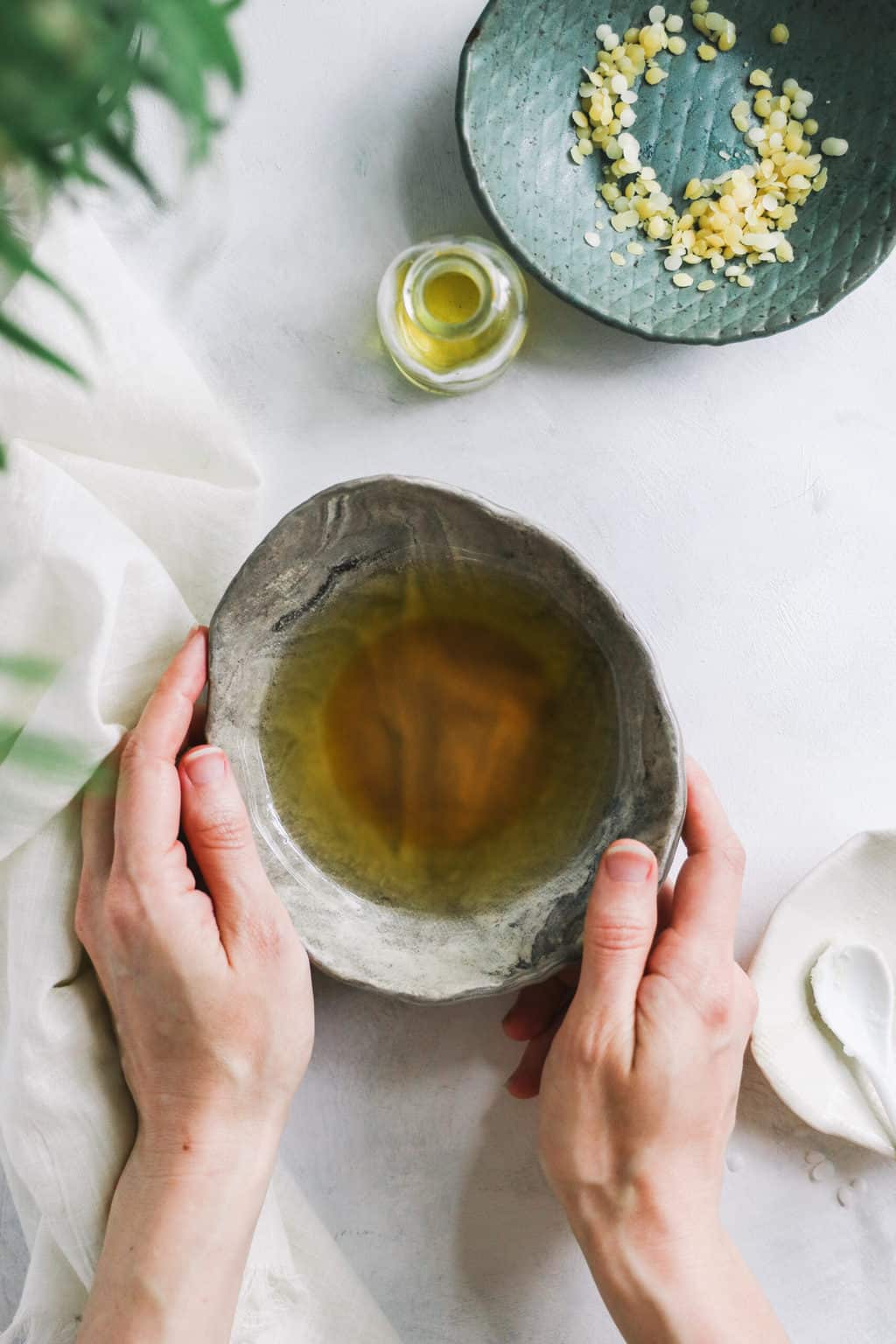
Step 2 | Melt Together
Microwave in 30-second increments for 1–2 minutes, until the oils and beeswax have completely melted. Alternatively, you can use a double boiler to melt your oils.
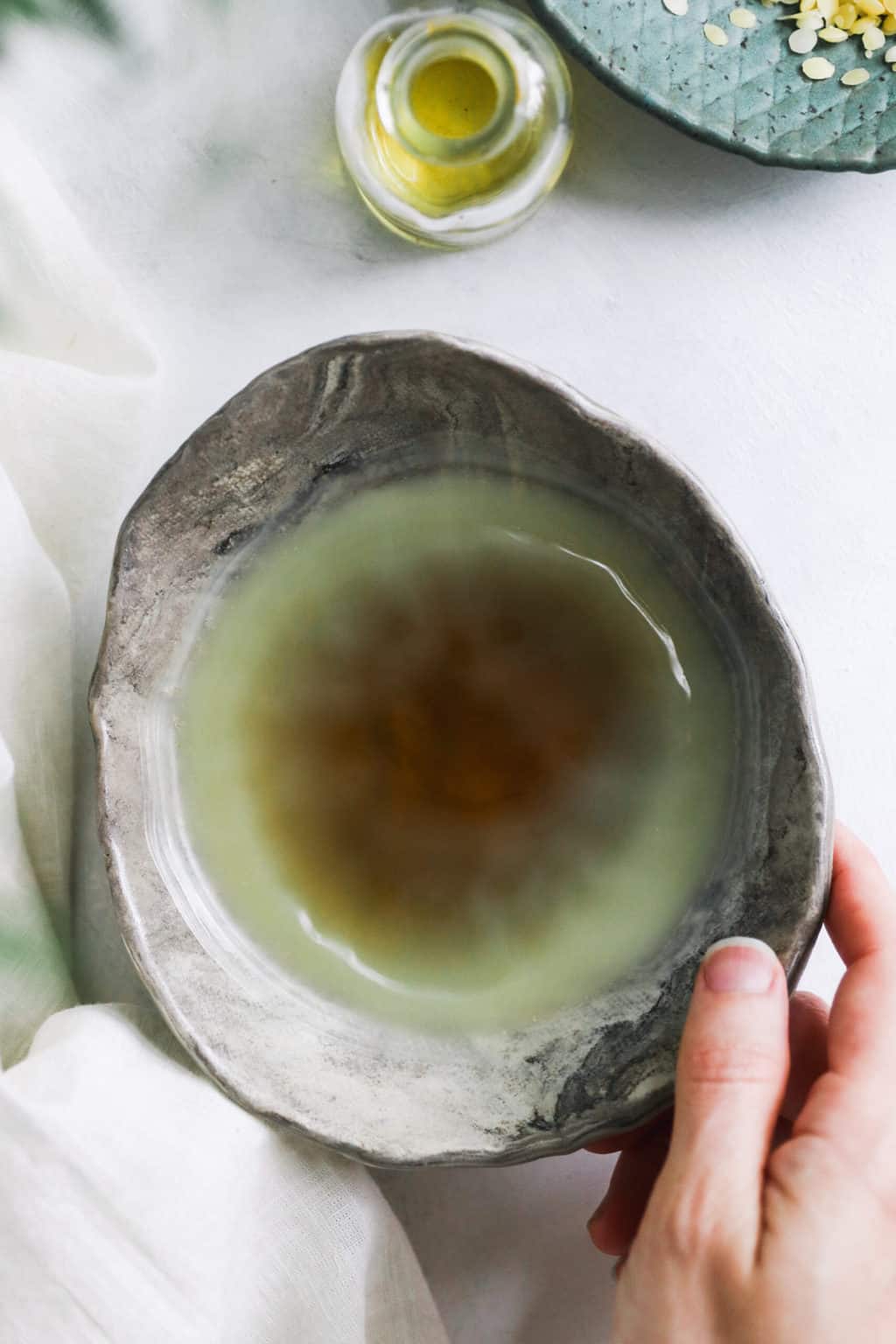
Step 3 | Cool Mixture
Place the bowl of melted oils in the freezer for about 2 minutes. When you take it out, the mixture should be solid around the edges but still liquid in the middle.
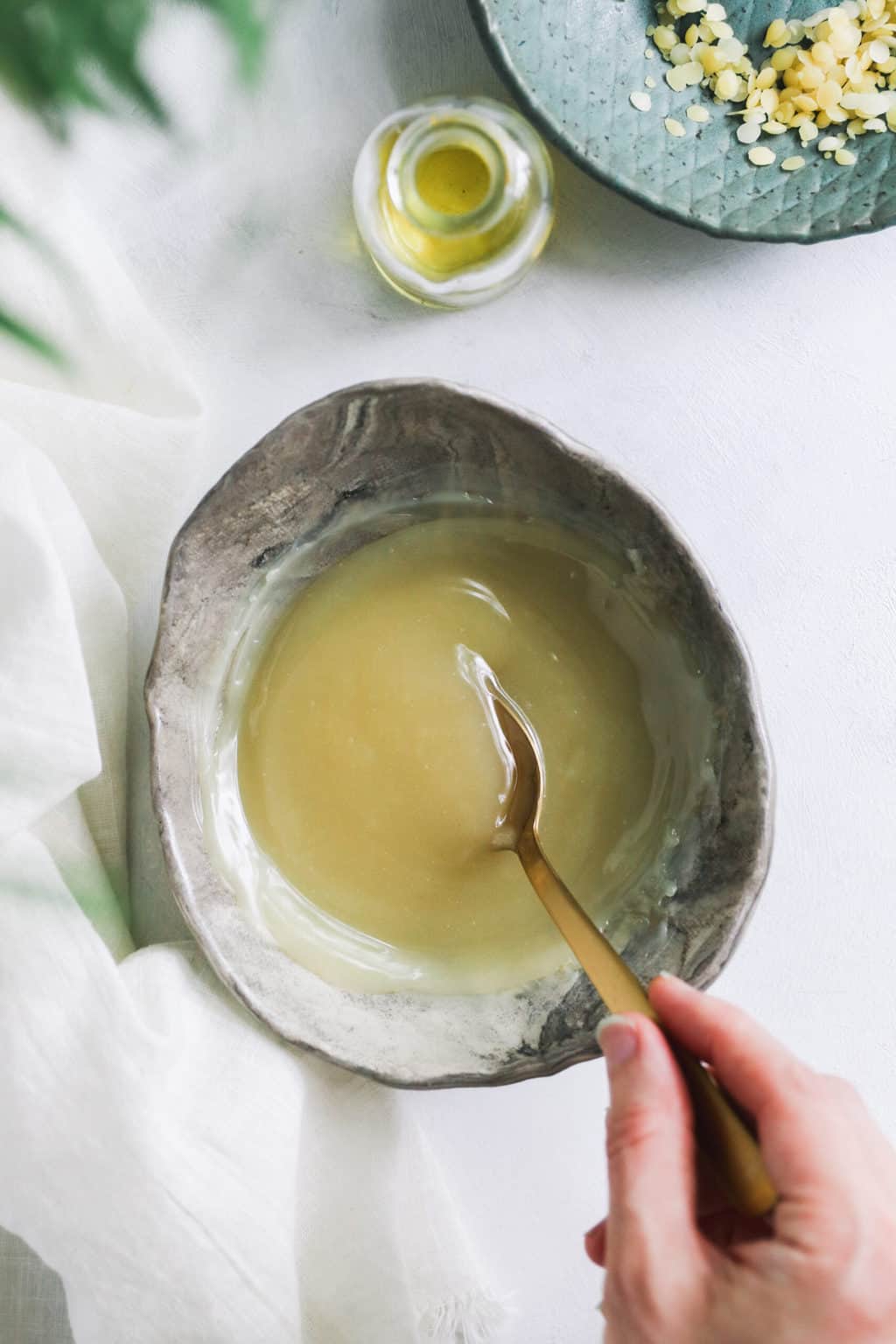
Step 4 | Stir
Stir for about 15 seconds until the mixture comes together almost like a thick batter.
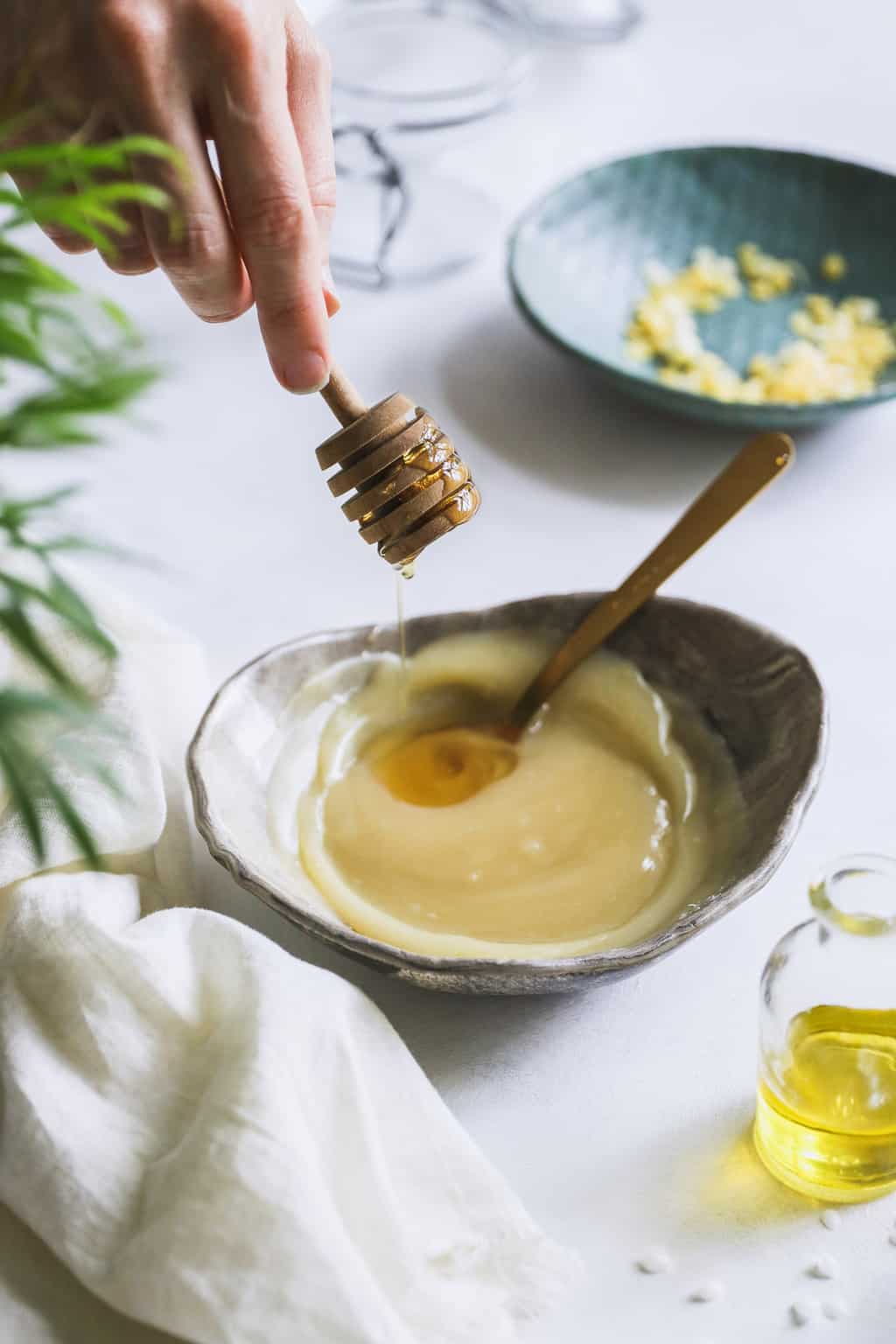
Step 5 | Add Honey
Add the honey, Leucidal Liquid SF (if using), and essential oils. Stir again. While the Leucidal SF says to let the mixture cool overnight before adding, I've found that the balm is much too solid at that point to mix well.
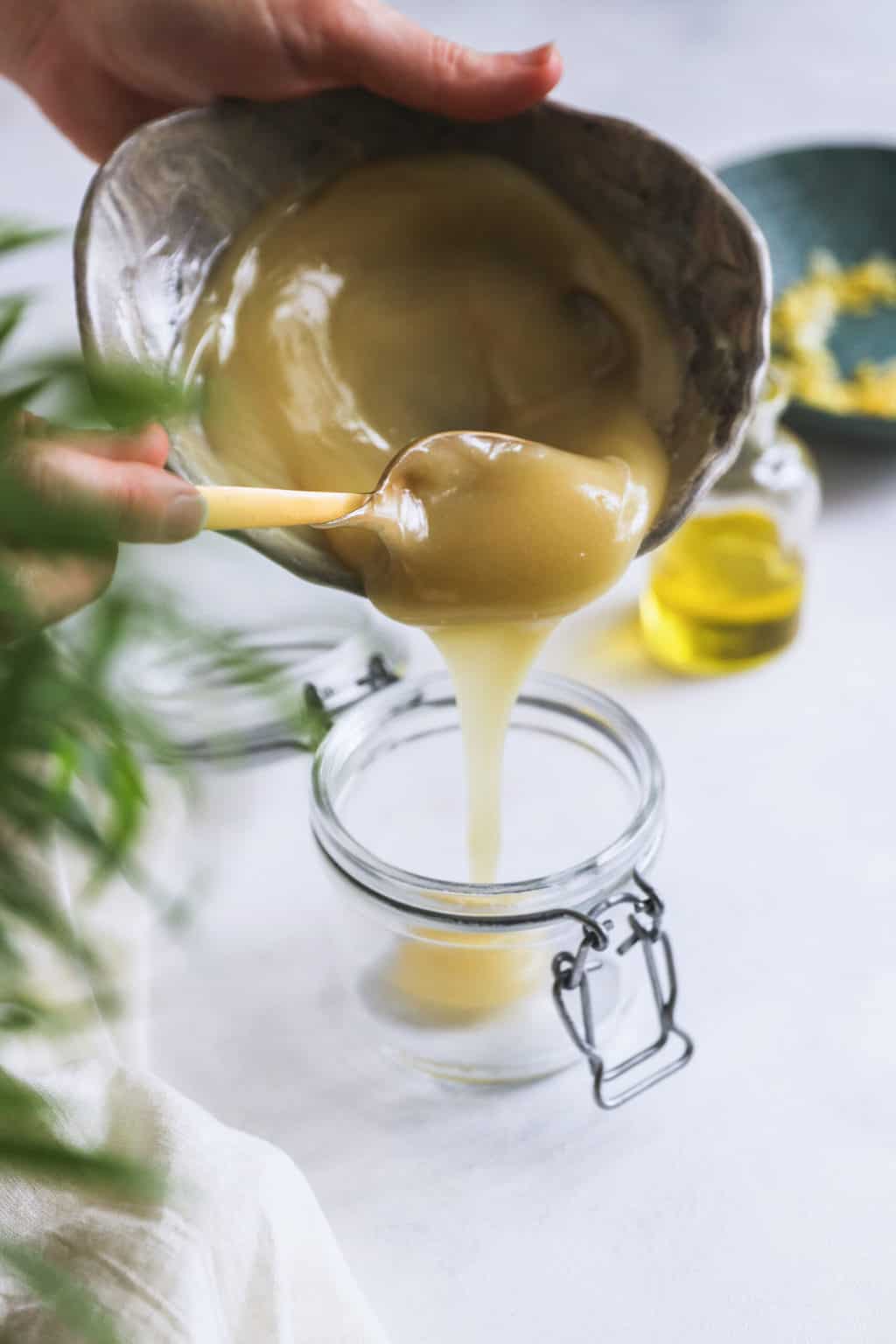
Step 6 | Transfer to Jar
Spoon the balm into a lidded glass container, and pop it into the refrigerator for 15 minutes to cool completely.
Let the balm solidify before using it, then apply as needed.
Substitutions
Olive and Almond oil: Any liquid-at-room-temperature oil should work.
Shea butter: Any solid-at-room-temperature butter should work.
Essential oils: Try adding eucalyptus essential oil or something simple and classic like lavender for relaxation or tea tree for its antimicrobial properties. Add these oils after removing the mixture from heat to preserve their essence.
I would stay away from cinnamon or clove too, because, while it smells super warm and festive, it can be rather irritating on the skin. To a lesser degree, peppermint falls into this category, too—it gives the balm a cooling effect but a little goes a long way.
Variations
When it comes to texture, this recipe is somewhere between a firm wax and a creamy oil. But if you would like a thicker, more solid balm, increase the amount of beeswax.
If you would like a creamier, more spreadable balm, add more oil. It’s a rather forgiving recipe, so feel free to play around with it until you find the texture that is right for you.
How to Work with Honey
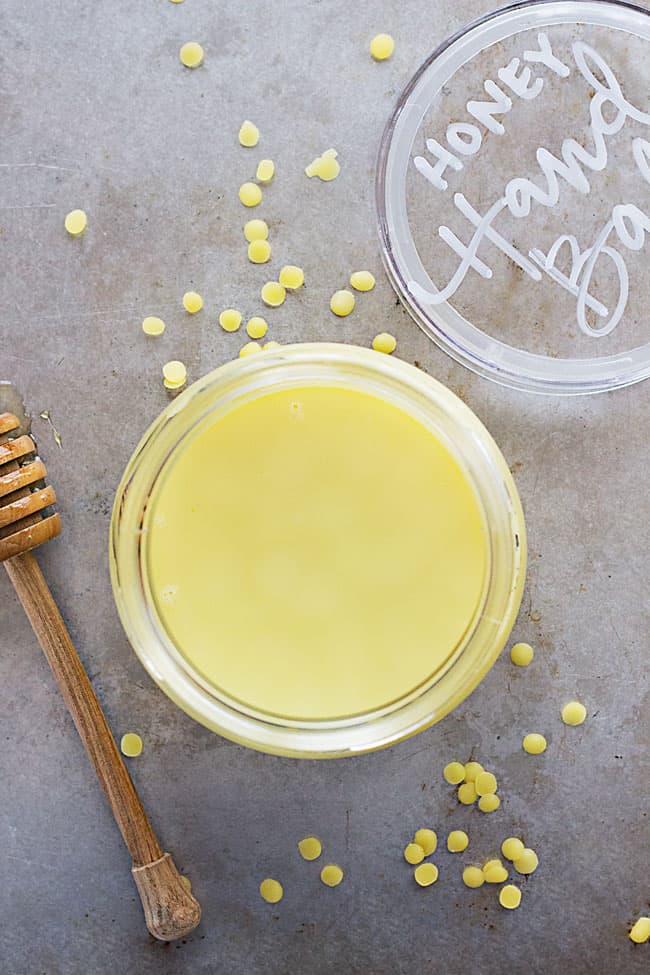
What if the honey settles at the bottom?
Honey can be tricky to incorporate fully into balms due to its water content and the nature of oils and waxes. You don't need to use emulsifying wax in your hand balm if you don't want to—but without it, honey is known to separate and settle at the bottom.
I've made this a few times over the years and haven't had this issue when making my balm. I noticed a tiny bit of settling, which is natural, but nothing to write home about.
If you see a lot of separation (like all of the honey ends up at the bottom of your container), it could be caused by the brand of honey or the temperature of the oils when you add the honey.
Let the melted oils cool as much as possible (think: barely lukewarm but still soft) before adding the honey. If you still see separation, you can always use an electric hand mixer to blend the oils with the honey, once the balm has completely cooled, then spoon it into your containers.
You can also use an emulsifying wax to hold everything together (see the second recipe below).
Storage
Without a preservative, it should last 3-6 months without needing refrigeration. With a preservative, it should last about a year.
But like all homemade beauty products, if you notice a change in smell or consistency or if you see mold, toss it out.
FAQ
The consistency of your balm depends on the ratio of beeswax to carrier oils. More beeswax results in a harder balm, while more oil makes it softer. Adjust these ratios to achieve your desired consistency. If your balm is too hard, re-melt it and add more oil; if too soft, add more beeswax.
Yes, for those looking for a vegan option, candelilla wax or soy wax can be used as alternatives to beeswax. Keep in mind that these waxes have different consistencies and melting points, so you may need to adjust your recipe accordingly.
Absolutely! Feel free to experiment by adding ingredients like vitamin E oil for its antioxidant properties, or different butters (such as cocoa) to enhance moisturizing benefits. Each addition can change the balm's consistency and properties, so small test batches are recommended.
Rich Honey Hand Balm
Equipment
- 8 ounce jar or several small tins with lids
- Microwave safe bowl
- Double boiler (optional)
Materials
Simple Honey Hand Balm (without Emulsifier or Preservative)
- ¼ cup coconut oil
- ¼ cup almond oil
- ¼ cup olive oil
- 5 tablespoons beeswax pastilles
- 1 tablespoon shea butter
- 1-½ tablespoons raw honey
- Essential oils of your choice
Honey Hand Balm with Emulsifier and Preservative
- ¼ cup coconut oil
- ¼ cup almond oil
- ¼ cup olive oil
- 3 tablespoons shea butter
- ¼ cup beeswax pastilles
- ¼ cup emulsifying wax pastilles
- 2 tablespoons raw honey
- 1 tablespoon Leucidal Liquid SF or any other natural preservative
- Essential oils
Instructions
- Combine everything except for the raw honey, Leucidal Liquid SF (if using), and essential oils in a microwave safe bowl.
- Microwave in 30-second increments for 1–2 minutes, until the oils and beeswax have completely melted. Alternatively, you can use a double boiler to melt your oils.
- Place the bowl of melted oils in the freezer for about 2 minutes. When you take it out, the mixture should be solid around the edges but still liquid in the middle.
- Stir for about 15 seconds until the mixture comes together almost like a thick batter.
- Add the honey, Leucidal Liquid SF (if using), and essential oils. Stir again. While the Leucidal SF says to let the mixture cool overnight before adding, I've found that the balm is much too solid at that point to mix well. I prefer to add it when the balm is barely at room temperature and still mixable.
- Spoon the balm into a lidded glass container, and pop it into the refrigerator for 15 minutes to cool completely.
- Let the balm solidify before using.
Notes
This post was medically reviewed by Dr. Jennifer Haley, a board-certified dermatologist with extensive experience in medical, cosmetic, and surgical dermatology. Learn more about Hello Glow’s medical reviewers here. As always, this is not personal medical advice, and we recommend that you talk with your doctor.
325

